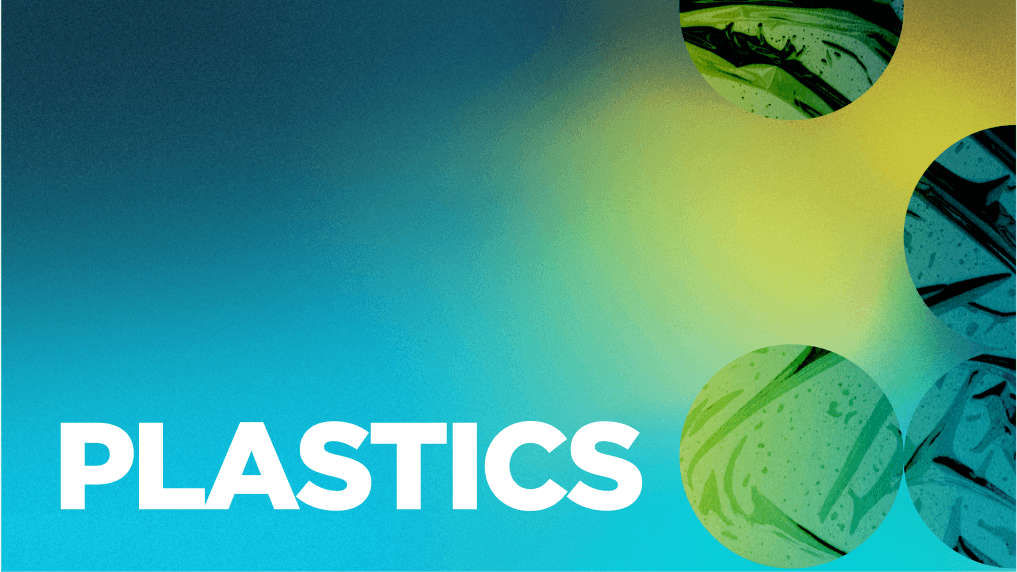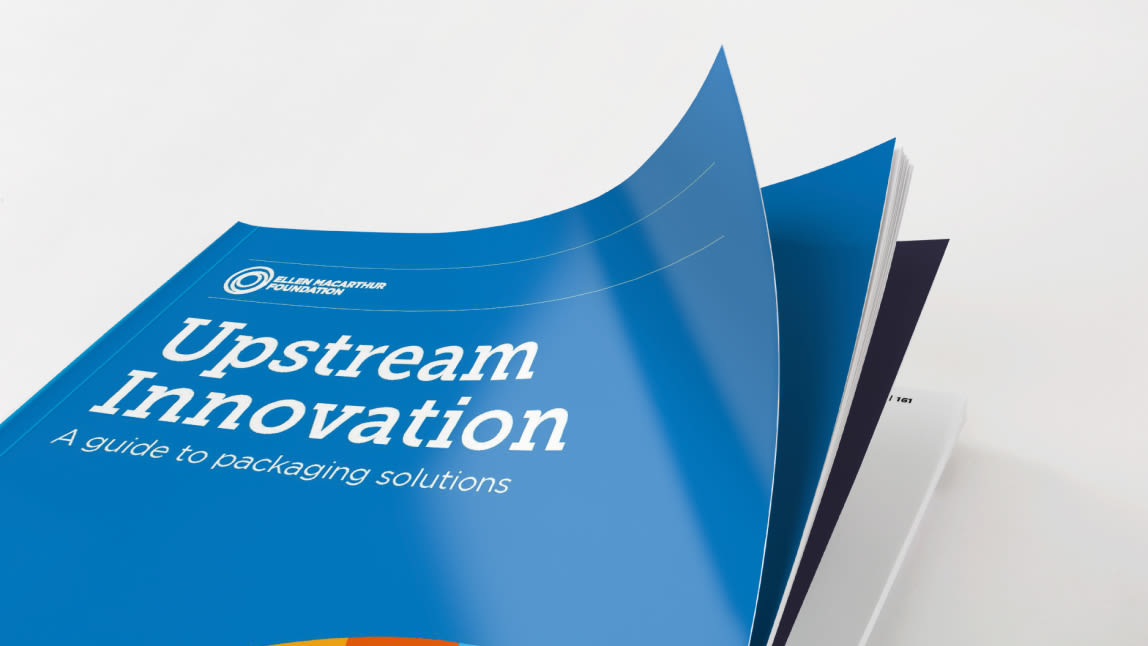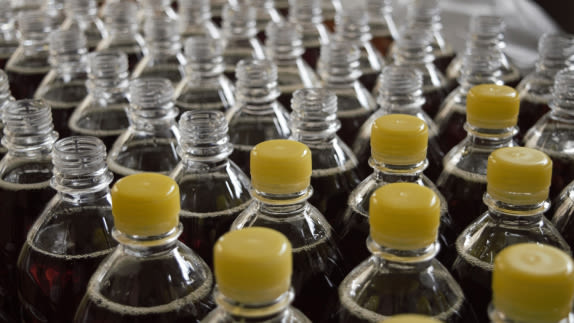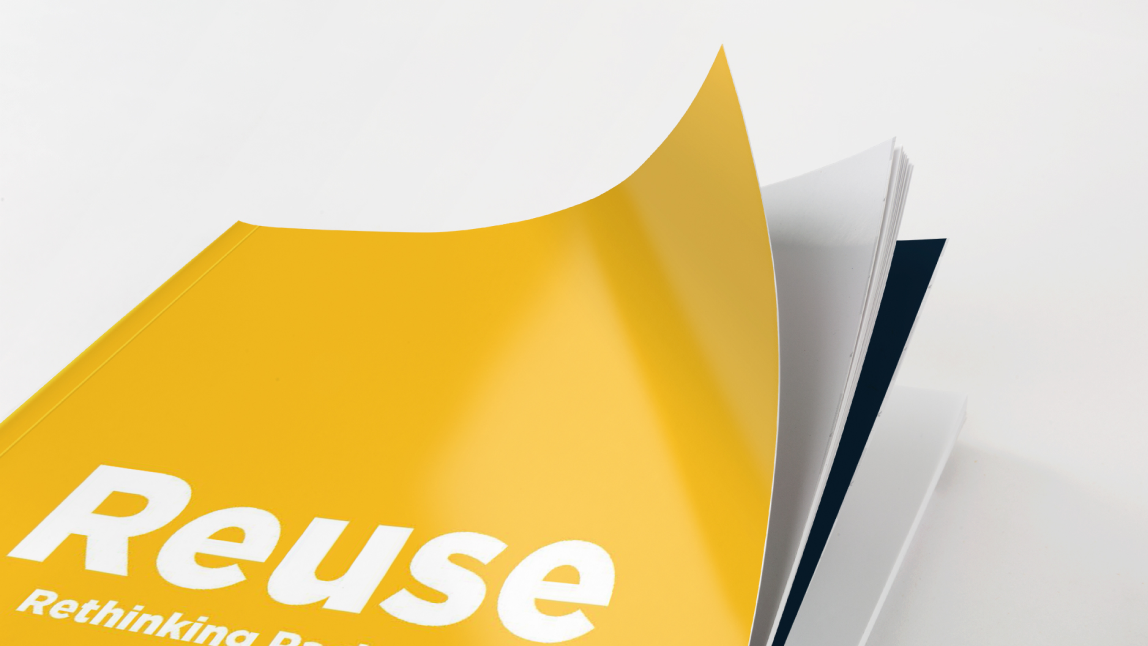Reusable packaging is a key part of a circular economy for plastic. It has the potential to address plastic pollution and bring significant business benefits, such as improved brand loyalty, better user experience, and lower costs. A shift from single-use packaging to reusables is one of the key tenets of a circular economy for plastics because it has the potential to eliminate waste and plastic pollution and keep packaging in high value use.
There are four different business-to-consumer (B2C) reusemodels that differ depending on whether the packaging is refilled by the user or returned to the business, and whether that refill/return takes place from home or on the go. There are also examples of business-to-business (B2B) reusereuseThe repeated use of a product or component for its intended purpose without significant modification. models, which are already far more widely adopted than the B2C models.
This page will examine each of these reusable packaging business model categories.
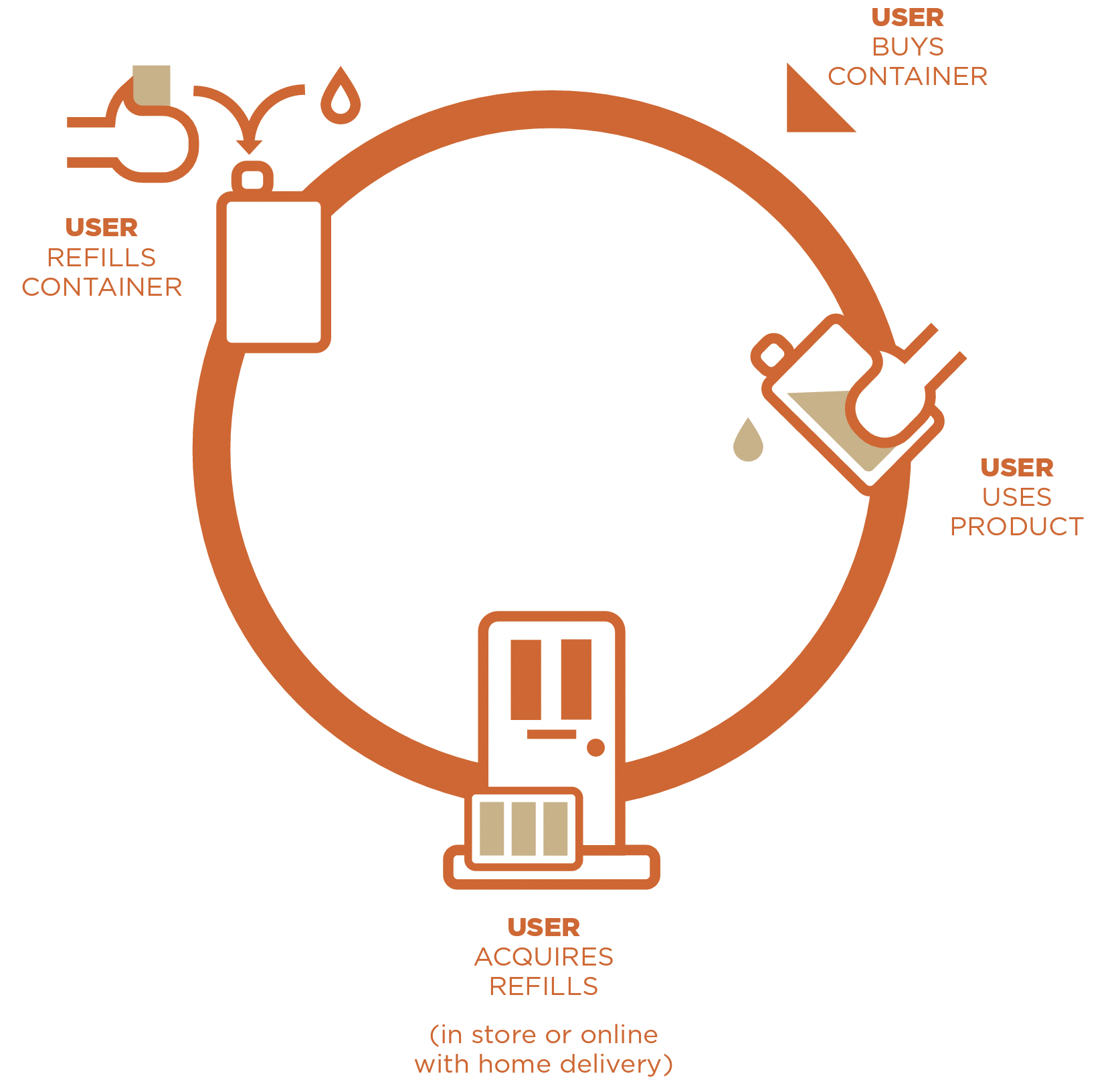
Refill at home
This business model involves a user keeping a reusable container which they refill at home. Refills might be delivered to the door, for example through a subscription service, or they could be bought in a shop. In this business model, users are responsible for the reusable packaging, including cleaning it.
This business model is currently being used across various industries, but one significant trend is companies selling concentrated or solid versions of usually liquid products, which the customer adds to water at home. For example, this could be concentrated liquid or solid tablet cleaning products that can be mixed with water in a bottle or dispenser the customer owns. This reduces transportation costs for the business that no longer has to transport large amounts of water in its products.
Another trend in this business model is businesses offering customers automatic refills delivered to their home through subscription services, which in turn improve brand loyalty.
One caveat to the effectiveness of this business model from a circular economyperspective is that it is important to ensure refills do not create more waste than the traditional single-use model. Therefore it is important to supply refills either without packaging or in packaging that is recyclable, compostable, or even reusable itself.
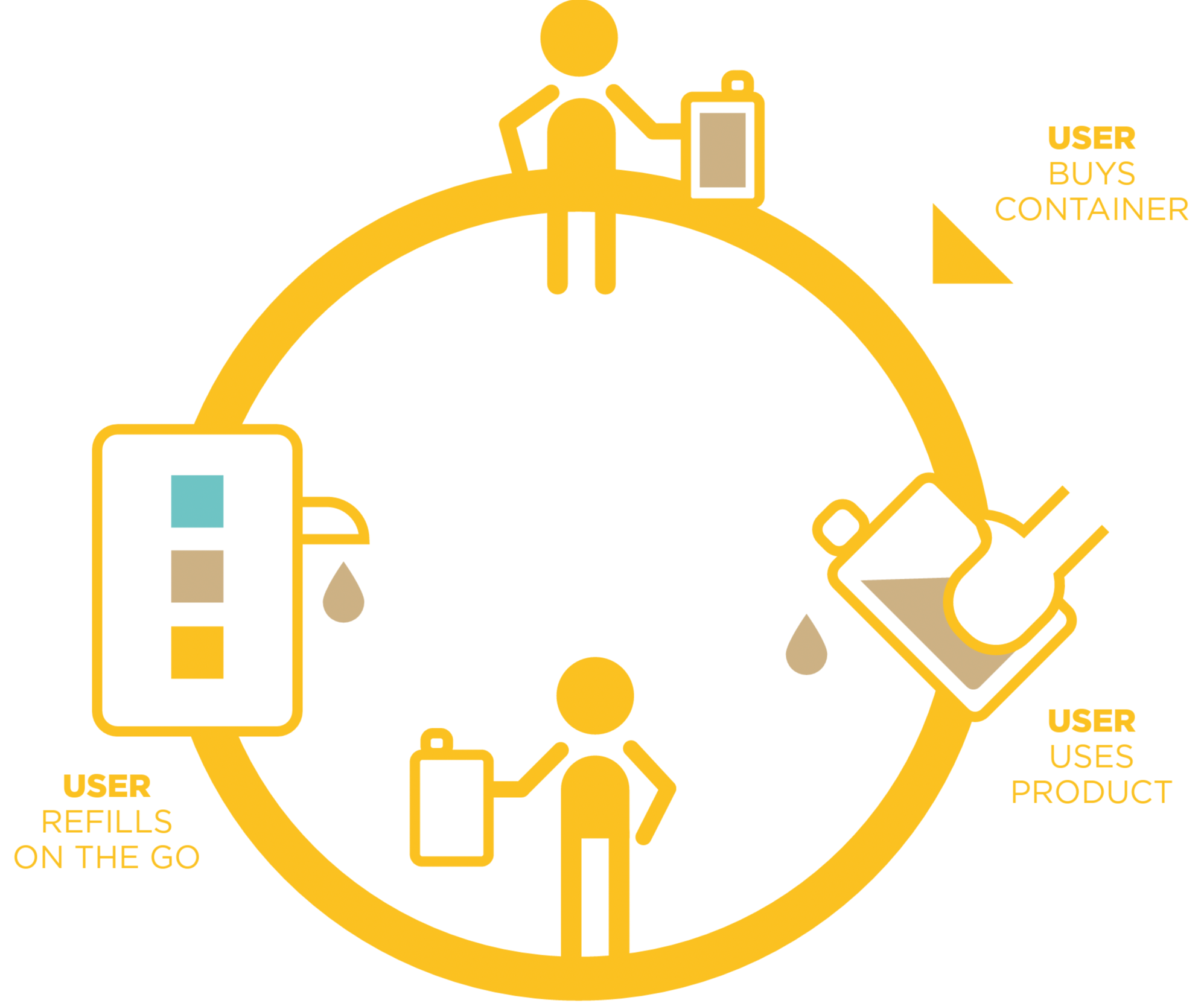
Refill on the go
In this business model, users refill their reusable container away from home, such as at an in-store dispensing system. Similarly with refill at home business models, users are responsible for cleaning and keeping the reusable packaging.
Existing examples of this reuse model include dispensers where customers can choose the amount/quantity they want to purchase. Dispensing systems like this can be distributed in public spaces, office buildings, can be mobile, or can be placed in traditional stores. Common uses of these systems are for dried goods, like pasta, grains, or beans, and beverages.

Return from home
For this kind of reuse business model, packaging is collected from customers’ homes. This usually works by customers subscribing to a delivery and collection service. The responsibility for the packaging in this case is with the business or service provider, which takes care of cleaning and redistributing the packaging.
In this model, the collection of packaging often happens upon the next delivery in a regular subscription service, meaning the company delivers new full containers and collects the customer’s empty containers. Because the packaging is recovered by the company, it becomes an asset to be invested in. Packaging is therefore designed with improved functionality and/or looks, giving the user a better experience.
When using this model, it is possible for businesses to share logistics and cleaning facilities, potentially through third-party service providers, to reduce costs.
This model is most well suited to urban areas where transport distances are shorter.
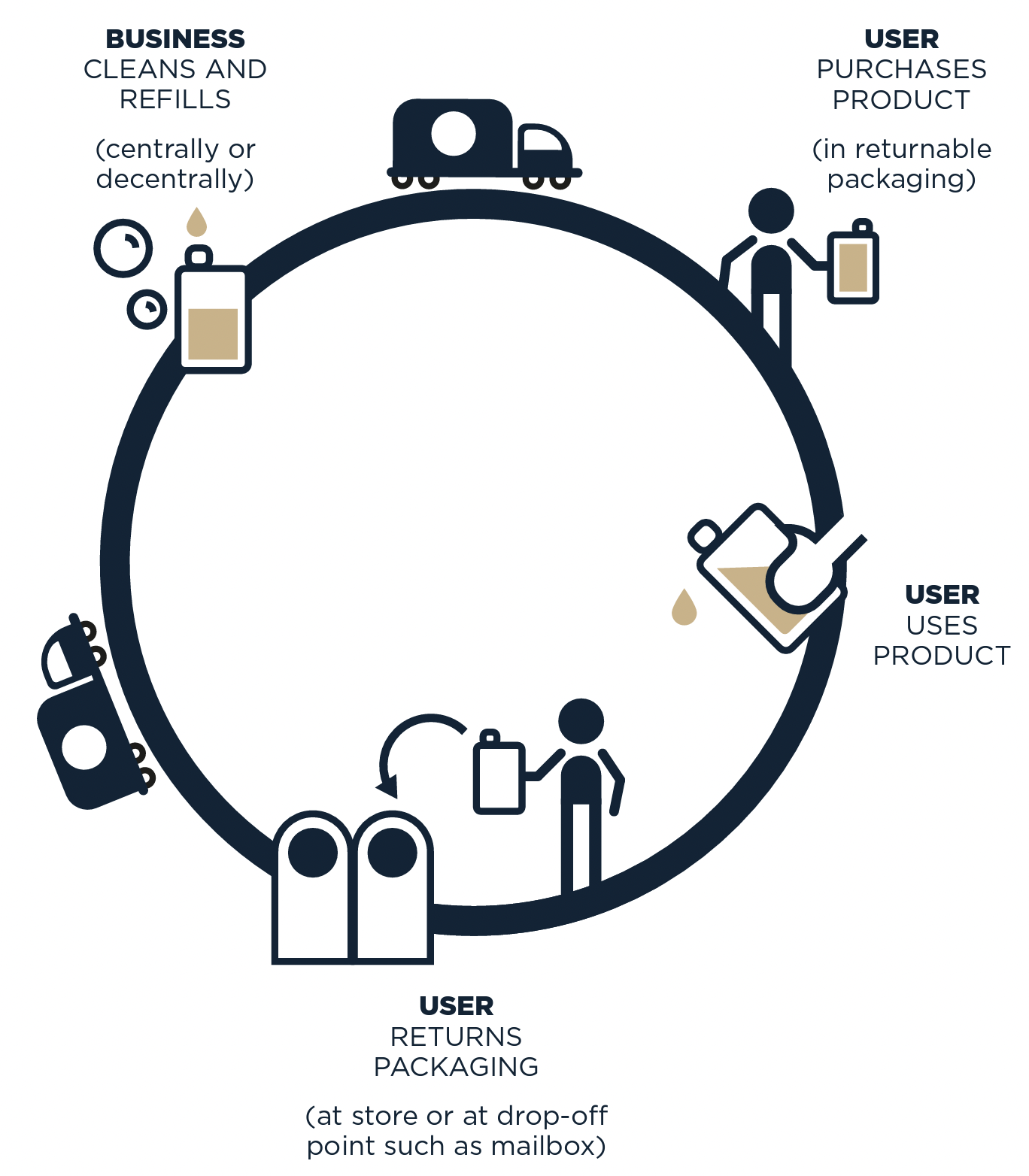
Return on the go
This business model involves users getting a product in reusable packaging and returning the packaging at a store or drop-off point, such as a deposit return machine or a mailbox. The packaging is then cleaned and redistributed.
Opportunities for this kind of business model include smart technologies used to tag and track packaging, control deposit payouts and gain user insights. Additionally, customer engagement and brand loyalty can be improved through deposit/reward schemes.
This type of reusable packaging is sometimes offered by a third party business as a service, meaning the brand or retailer does not need to be responsible for the reuse system. The service provider would provide the packaging and handle the collection, washing, and redistribution. This has worked particularly well for beverages and takeaway food.
Standardisation of packaging design can help make reuse affordable and feasible for the whole value chain. System costs are lowered if packaging can be used across brands or even entire product categories, because storage, transport, sorting, and washing can be optimised.
B2B reusable packaging
In addition to the four B2C reusable packaging business models, there are many examples of reusable packaging being used in B2B settings, many of which are already adopted at large scale, such as reusable pallets, crates, foldable boxes, pails, drums, and various alternatives to flexible pallet wraps. Transport packaging is often reused within an individual company, but reuse also happens at industry-wide scales with reuse systems built on interconnected operators managing a shared set of standardised, reusable packaging.
Large scale reuse systems come with benefits including shared costs and lower consumption of materials and fuel. The large scale adoption of reusable packaging in B2B settings – and the innovation that created the systems – demonstrates the scalability and benefits of reusable packaging.
B2B operations are also a good space for third-party providers to offer reusable packaging as a service, removing the need for individual businesses to be responsible for the reuse system. There are many scaled ‘reuse-as-a-service’ providers operating in B2B settings and the market is predicted to continue to grow.
The vision of a global reuse system for B2B transport is based on standardised and modularised reusable containers, using an open network across industry, with pooled assets and protocols and real-time tracking of location and status. This has the power to unlock considerable business and environmental value.

Reuse – rethinking packaging
Reuse – rethinking packaging provides a framework to understand reuse models by identifying six major benefits of reuse, and mapping 69 reuse examples. Based on an evaluation of more than 100 initiatives, and interviews with over 50 experts, it aims to inspire and help structure thinking.

